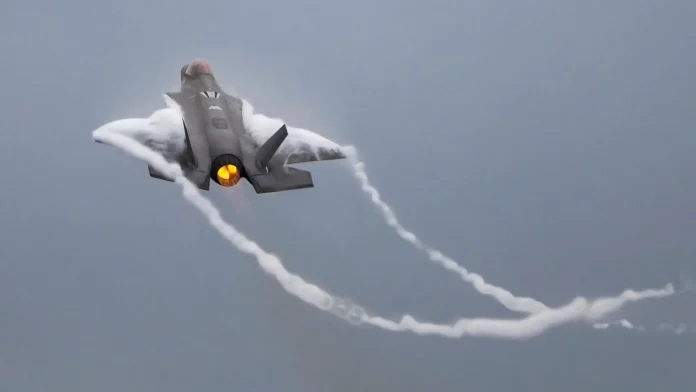A surface-to-air missile launched by Houthi forces in Yemen nearly struck a US F-35 fighter jet. The incident happened during Operation Rough Rider. The jet took evasive action and avoided damage.
The F-35 is one of the most advanced fighters in the US military. Its close call has raised new questions about American air power. If basic air defences can threaten high-end aircraft, larger conflicts may pose greater risks.
Military analyst Gregory Brew reported that several US jets, including F-16s and the F-35, faced real threats. He noted the Houthis have also downed seven MQ-9 Reaper drones. Each drone costs around $30 million. Their loss has reduced the US military’s ability to monitor and strike Houthi targets.
Houthi air defences: Simple but effective
The Houthis use a mix of basic and modern missile systems. Many are improvised and rely on passive infrared sensors. These systems often include modified air-to-air missiles.
Their simplicity makes them harder to detect. Their mobility adds to the threat. Crews can quickly reposition them, creating unpredictable risks for pilots.
The Houthis also use more advanced systems supplied by Iran. These include the Barq-1 and Barq-2, based on Iran’s Taer missile family. These systems derive from older Soviet models, such as the SA-6 and SA-11.
The Houthis claim the Barq-1 can hit targets up to 31 miles away and at 49,000 feet. The Barq-2 reportedly reaches 44 miles and 65,000 feet. Iran launches Taer missiles from wheeled vehicles with built-in radar. Some systems also include infrared or optical cameras for tracking.
Broader implications for modern warfare
This near miss has sparked debate. If the Houthis can threaten advanced jets, what happens in conflicts with major powers?
Modern aircraft like the F-35 are designed to avoid detection. Still, older missiles can pose a danger when used effectively. This incident shows that expensive and advanced systems are not always safe from simpler weapons.
US planners must consider how low-cost threats can reduce the effectiveness of high-tech platforms. In future conflicts, success may rely not only on better equipment but also on better strategy and adaptability.
